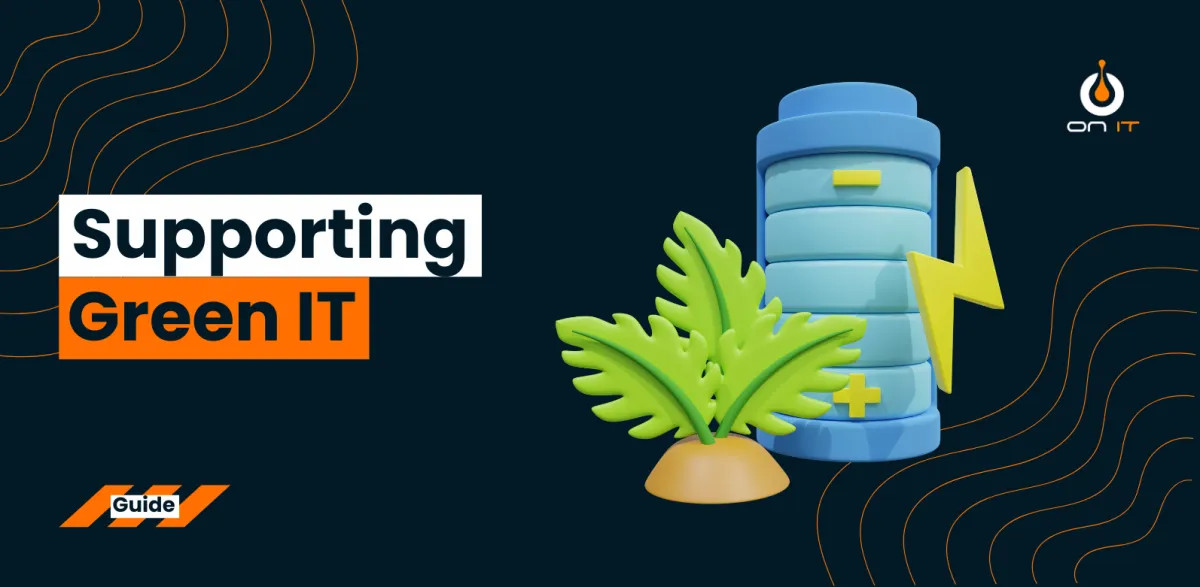
Green IT Practices: How Your Business Can Reduce Its Carbon Footprint
In today’s world, businesses are becoming more conscious of their environmental impact, and Green IT (or sustainable IT) practices are emerging as a crucial focus for companies aiming to reduce their carbon footprint. These practices involve cutting energy consumption, improving resource efficiency, and minimising e-waste throughout the IT lifecycle.
But how can your business effectively embrace Green IT? And how can a Managed Service Provider (MSP) like us help you on this journey? In this blog post, we’ll explore practical steps to adopt sustainable IT practices and how we can support you in making meaningful environmental changes.
What is Green IT?
Green IT refers to the environmentally responsible use of technology. It covers a wide range of activities, from reducing energy consumption of devices and data centres to recycling old hardware and adopting cloud computing to minimise your business’s environmental impact.
By implementing Green IT practices, your business can reduce its carbon footprint, lower operational costs, and contribute to global sustainability efforts.
How Can Your Business Reduce Its Carbon Footprint?
There are several ways your business can minimise its environmental impact through Green IT practices. Here are a few key strategies:
1. Optimise Energy Efficiency
One of the simplest and most effective ways to reduce your IT carbon footprint is by improving the energy efficiency of your hardware and software.
Actions You Can Take:
Upgrade to energy-efficient devices: Modern computers, servers, and networking equipment are designed with energy-saving features. Replacing outdated hardware can drastically reduce your power consumption.
Use energy-saving settings: Implement settings like auto-sleep modes, power-saving options, and scheduled shutdowns for computers and other IT equipment.
Consolidate servers: Virtualisation allows multiple applications to run on fewer physical servers, reducing the power and cooling demands of your data centres.
How We Can Help:
As your MSP, we can audit your current IT infrastructure, identify energy inefficiencies, and recommend hardware and software solutions that minimise power consumption. We can also help configure your systems for maximum energy savings.
2. Move to the Cloud
On-premises servers consume large amounts of energy and require constant cooling. By moving to cloud-based infrastructure, your business can benefit from the energy efficiency of large-scale data centres, which are often designed to be more environmentally friendly than maintaining individual servers.
Actions You Can Take:
Migrate to cloud services for data storage, applications, and computing. Cloud providers often use energy-efficient hardware and cooling technologies and are increasingly powered by renewable energy sources.
Adopt cloud collaboration tools like Microsoft 365 or Google Workspace, which allow teams to work more efficiently without maintaining heavy on-premises infrastructure.
How We Can Help:
We specialise in helping businesses transition to the cloud with minimal disruption. We’ll ensure your data is safely migrated, and we’ll manage your cloud environment to ensure it remains energy efficient and cost-effective.
3. Reduce E-Waste
Electronic waste (e-waste) is a significant environmental issue. As devices become outdated or obsolete, they often end up in landfill, contributing to pollution and resource depletion. Reducing e-waste not only helps the environment but can also reduce costs associated with purchasing new equipment.
Actions You Can Take:
Recycle or donate old hardware: Instead of discarding old computers and servers, recycle them responsibly or donate them to organisations that can still use them.
Repair, refurbish, and reuse: Extend the lifespan of your equipment by repairing and refurbishing old devices rather than replacing them prematurely.
Implement device lifecycle management: Track your hardware assets and ensure they are reused or recycled appropriately at the end of their lifecycle.
How We Can Help:
As part of our IT asset management services, we can assist with the proper recycling or repurposing of old hardware, ensuring it’s disposed of in an environmentally friendly manner. We can also help you implement policies to reduce waste and extend the life of your IT equipment.
4. Adopt Remote Work Solutions
Remote working can be part of your Green IT strategy by reducing the need for office space, commuting, and the energy consumption associated with maintaining on-site infrastructure. With the right tools, remote work can contribute to a smaller carbon footprint.
Actions You Can Take:
Implement remote collaboration tools: Use video conferencing, file sharing, and virtual workspaces to enable employees to work from home efficiently.
Encourage flexible working: By reducing the need for daily commutes, your business can lower its overall environmental impact.
How We Can Help:
We can set up and manage remote work solutions, ensuring your employees have access to secure, efficient tools that allow them to collaborate seamlessly from anywhere. From virtual desktops to secure file sharing, we’ll keep your operations running smoothly while supporting your sustainability goals.
The Role of an MSP in Supporting Green IT
As an MSP, our goal is to help your business implement sustainable IT practices while maintaining high levels of performance, security, and efficiency. Here’s how we can support your journey towards Green IT:
Energy-efficient infrastructure: We’ll optimise your IT setup to ensure it's as energy-efficient as possible, from hardware to software configurations.
Cloud migration and management: We’ll guide you through the process of moving to the cloud, ensuring a smooth transition and helping you select cloud providers with strong environmental credentials.
Sustainable IT strategies: We’ll help you develop a comprehensive IT strategy that aligns with your sustainability goals, including lifecycle management and e-waste reduction.
Ongoing support and advice: Green IT is a continuous effort. We provide ongoing support to ensure your systems remain efficient, secure, and aligned with the latest sustainability practices.
Conclusion
Incorporating Green IT practices into your business not only helps protect the environment but also improves efficiency and reduces operational costs. By optimising energy consumption, moving to the cloud, reducing e-waste, and supporting remote work, your company can make a meaningful contribution to a greener future.
With the support of an MSP, your business can adopt these strategies smoothly and efficiently, ensuring both sustainability and success. 🌍
